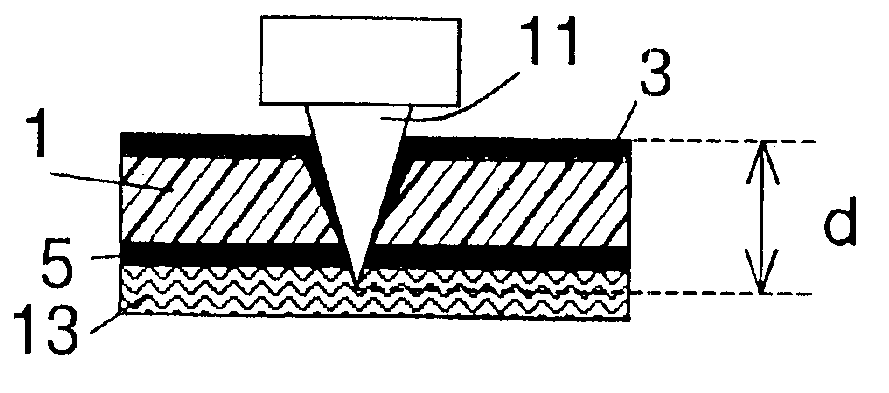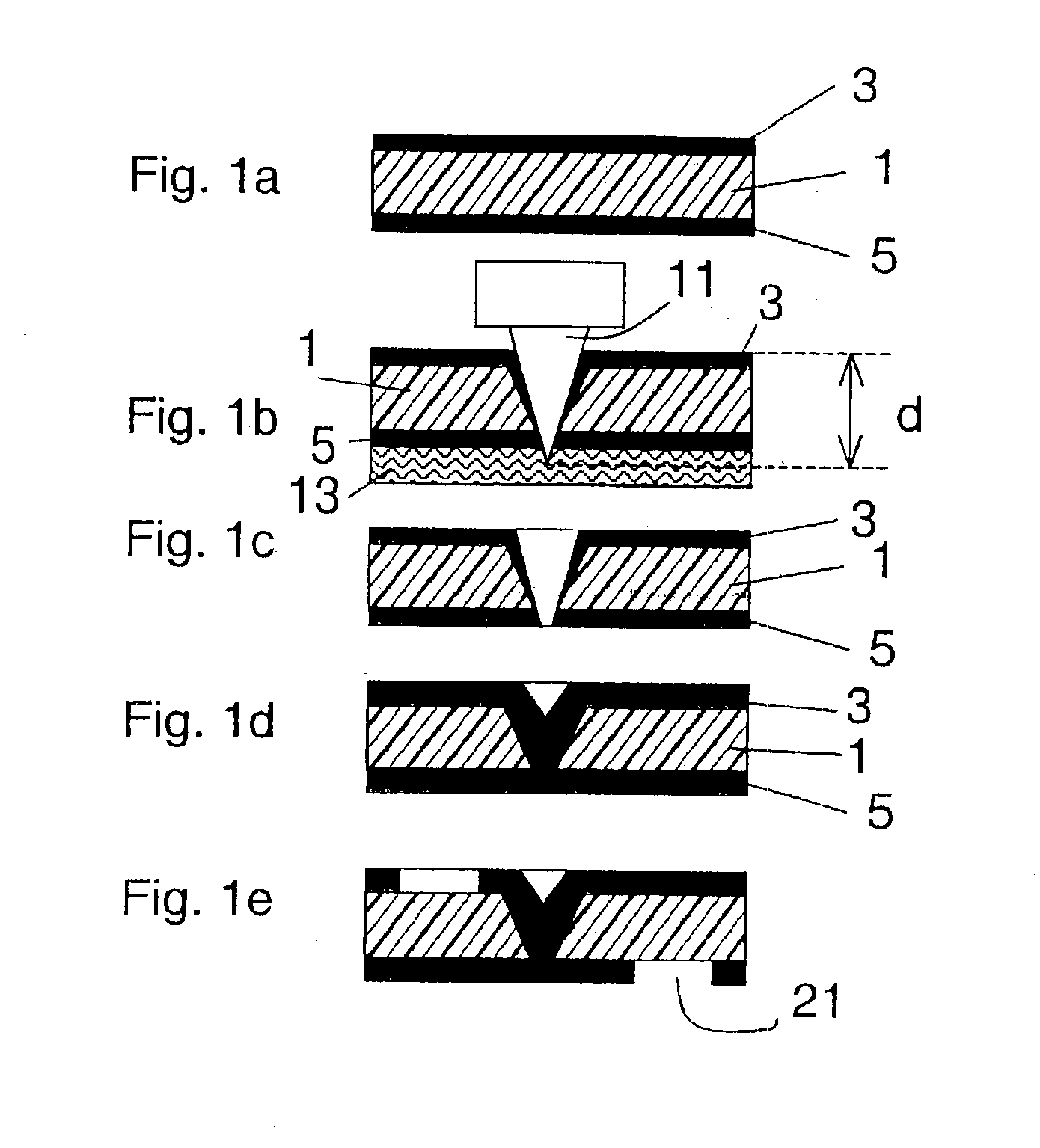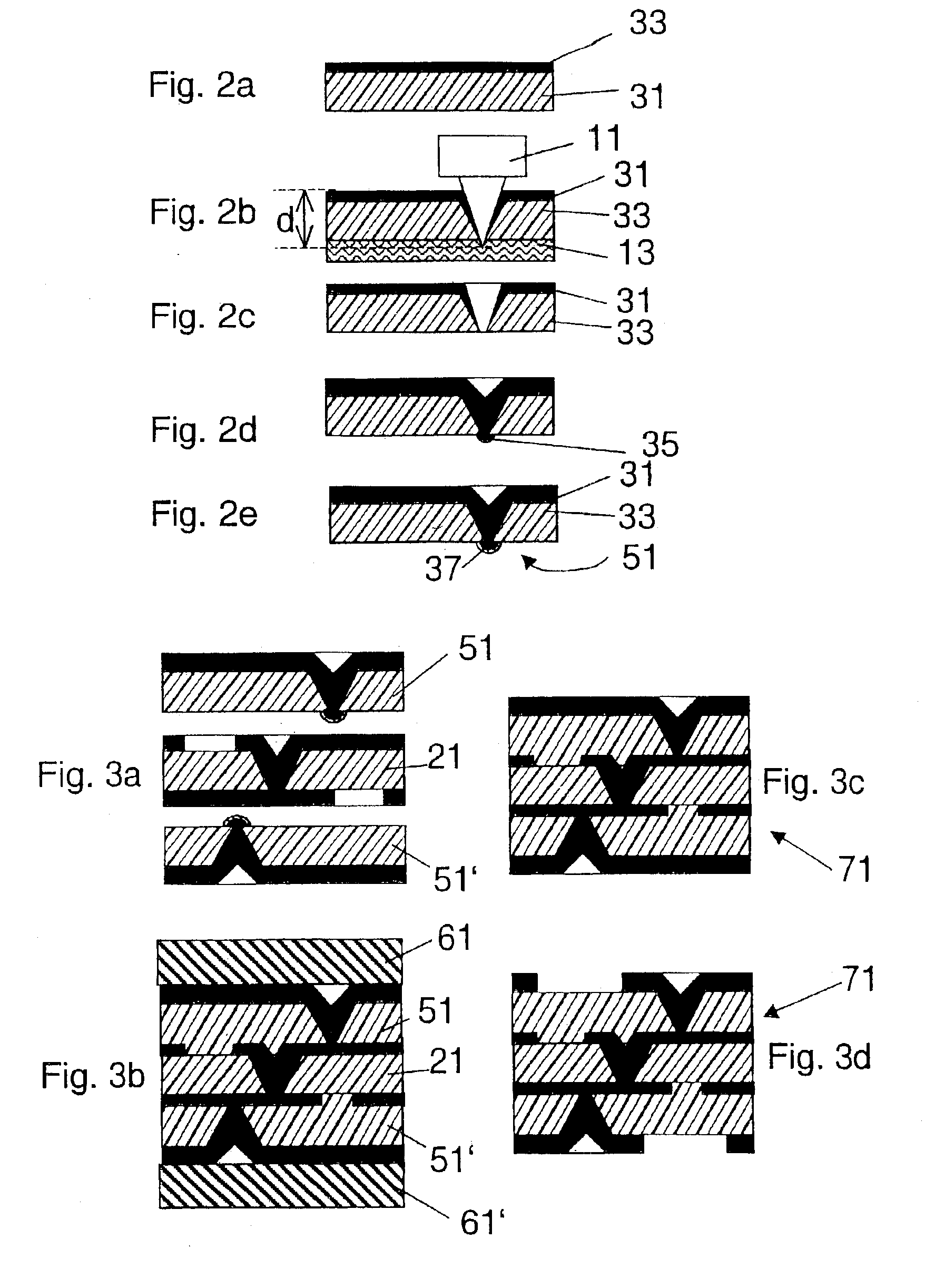Method for fabricating electrical connecting element
a technology of electrical connecting elements and electrical components, which is applied in the direction of printed circuit parts, electrical apparatus, printed circuit non-printed electric components association, etc., can solve the problems of piercing spots and protrusions, and achieve the effect of more reliable and efficien
- Summary
- Abstract
- Description
- Claims
- Application Information
AI Technical Summary
Benefits of technology
Problems solved by technology
Method used
Image
Examples
Embodiment Construction
[0017]FIGS. 1a through 1e show a process to manufacture PCB / HDI substrates or semi-finished products for the production thereof by means of a micro-perforation technique. In the following, with reference to FIGS. 1a-1e, 2a-2e and 3a-3d a process for manufacturing a four-layer build-up is described. It should be noted, however, that the described process can also be used to produce an electrical connecting element of 2 layers, 3 layers, 5 layers, 6 layers or any other number of layers. A PCB / HDI substrate of two layers, for example, can be produced using the procedure of FIGS. 1a-1e. Also, a product produced according to FIGS. 2a-2e may by itself serve as a two layer PCB / HDI substrate. In order to produce a PCB / HDI substrate of more layers, to such a substrate produced in accordance with FIGS. 1a-1e (as a semi-finished product), the appropriate number of semi-finished products produced according to FIGS. 2a-2e has to be added.
[0018]In FIG. 1a, the core base material 1, which is alrea...
PUM
| Property | Measurement | Unit |
|---|---|---|
| Thickness | aaaaa | aaaaa |
| Electrical conductor | aaaaa | aaaaa |
| Distance | aaaaa | aaaaa |
Abstract
Description
Claims
Application Information
 Login to View More
Login to View More - R&D
- Intellectual Property
- Life Sciences
- Materials
- Tech Scout
- Unparalleled Data Quality
- Higher Quality Content
- 60% Fewer Hallucinations
Browse by: Latest US Patents, China's latest patents, Technical Efficacy Thesaurus, Application Domain, Technology Topic, Popular Technical Reports.
© 2025 PatSnap. All rights reserved.Legal|Privacy policy|Modern Slavery Act Transparency Statement|Sitemap|About US| Contact US: help@patsnap.com



